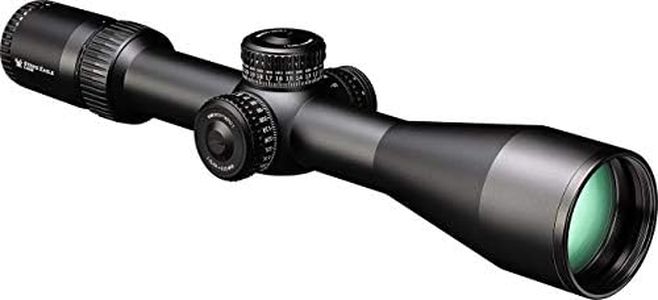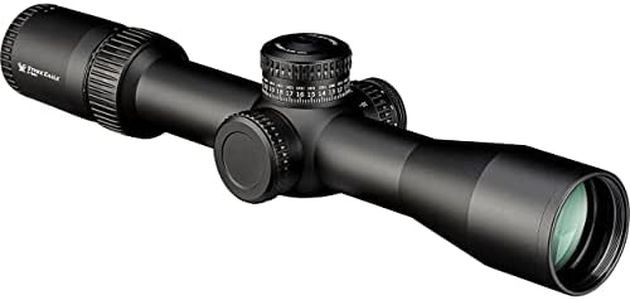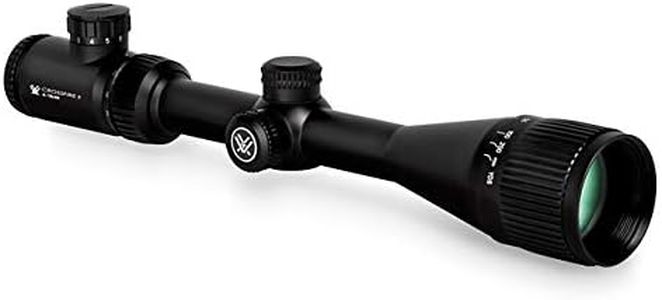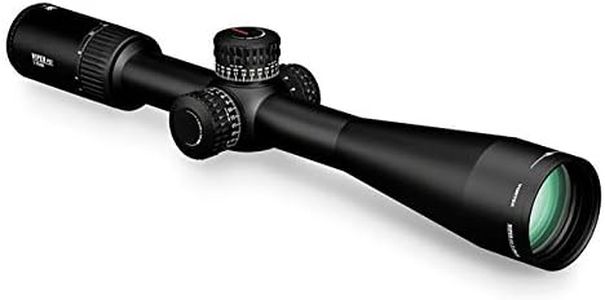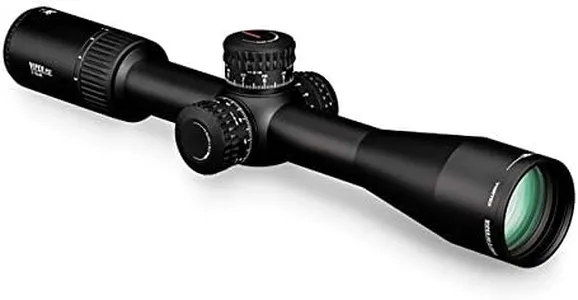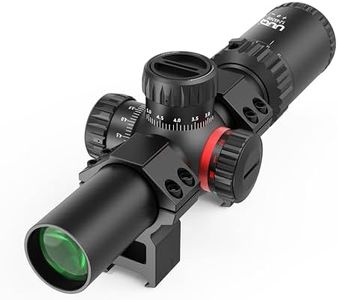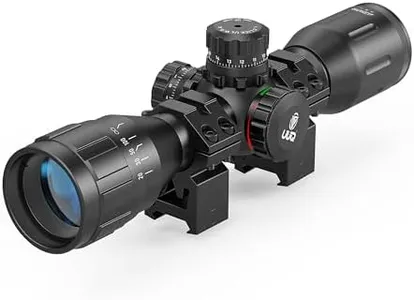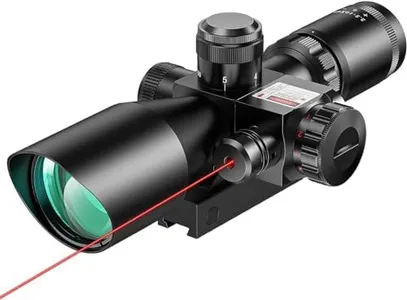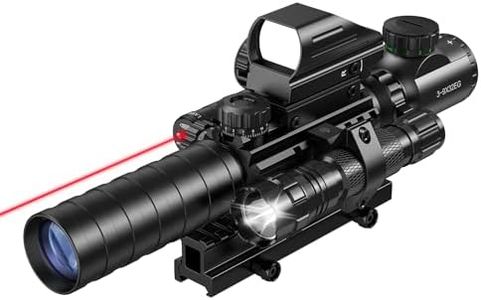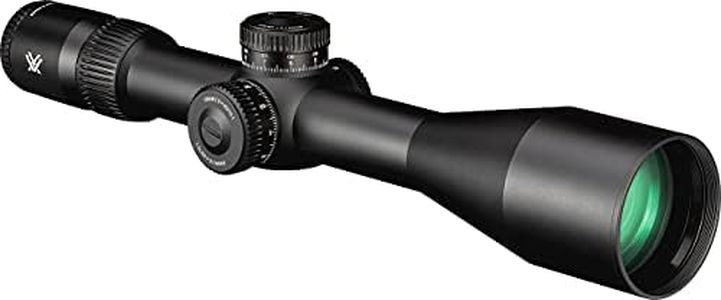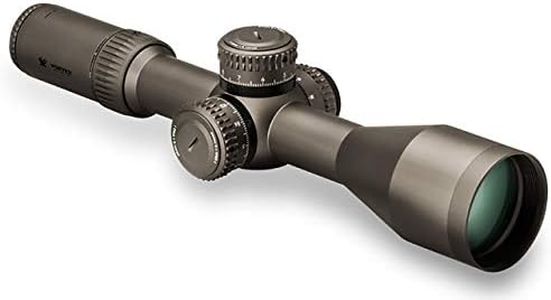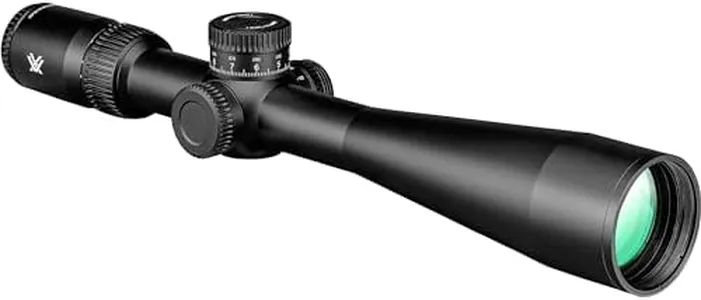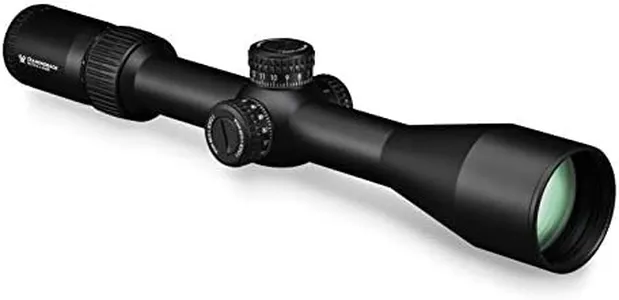10 Best Vortex Optics Scopes 2025 in the United States
Our technology thoroughly searches through the online shopping world, reviewing hundreds of sites. We then process and analyze this information, updating in real-time to bring you the latest top-rated products. This way, you always get the best and most current options available.

Our Top Picks
Winner
Vortex Optics Strike Eagle 5-25x56 First Focal Plane Riflescope - EBR-7C Reticle (MOA)
Most important from
838 reviews
The Vortex Strike Eagle 5-25x56 is a versatile riflescope designed especially for long-distance shooting and hunting. Its 5-25x magnification range offers great flexibility, allowing you to zoom in close for distant targets while still having a wider view at lower magnifications. The large 56mm objective lens helps gather plenty of light, improving visibility in low-light conditions like dawn or dusk. The EBR-7C reticle in the first focal plane means the aiming marks stay accurate at all zoom levels, which is a big advantage for precise shooting.
The scope's 34mm tube is made from durable aircraft-grade aluminum, making it shockproof and suitable for rough outdoor use. Features like the RevStop Zero system and locking turrets ensure that adjustments are reliable and can be quickly reset, which is handy when you need fast, accurate changes in the field. The throw lever for magnification adjustment adds convenience, so you can change zoom levels smoothly without fumbling.
In terms of clarity, the XD Optical System and anti-reflective coatings provide sharp images with minimal color distortion and good light transmission, which means clearer views even in challenging lighting. The scope is also nitrogen-purged and sealed to resist fog and water, so it holds up well in different weather conditions. Weighing 1.9 pounds, it might feel heavy on lightweight rifles, but it suits hunters and long-range shooters who want a durable, feature-rich optic that balances high magnification with good light gathering and reliable reticle performance. Its combination of rugged build, useful adjustment features, and clear optics makes it a strong choice for serious outdoor use.
Most important from
838 reviews
Vortex Optics Strike Eagle 3-18x44 First Focal Plane Riflescope - EBR-7C Reticle (MOA)
Most important from
838 reviews
The Vortex Strike Eagle 3-18x44 is a solid choice if you want a versatile riflescope that works well for mid- to long-range shooting. Its magnification range from 3x to 18x allows you to zoom in enough for distant targets without making the scope bulky or heavy. The 44mm objective lens is a good size, letting in plenty of light for clear images, especially in low-light conditions like early morning or dusk. The first focal plane EBR-7C MOA reticle is a helpful feature since it stays accurate across all zoom levels, making it easier to estimate range and adjust quickly.
The 34mm tube diameter provides a wide range of elevation and windage adjustments, which is great for precision shooting, and the exposed elevation turret lets you make quick changes. Although the windage turret is capped to save weight, it might slow down adjustments a bit. The scope is built tough with waterproof, fogproof, and shockproof features, plus special coatings to resist scratches and dirt, so it holds up well outdoors. It also includes a throw lever for fast magnification changes, which adds to convenience in the field. Its field of view at 6.7 feet at 100 yards gives a clear sight picture, though it may be a bit narrower at higher zoom. Weighing 2.7 pounds, it's reasonably lightweight but not the lightest option available.
One minor downside is the absence of night vision compatibility, so it’s not ideal for very low-light or night shooting. The lifetime warranty is a nice bonus, showing confidence in its durability. This riflescope offers a good balance of clarity, durability, and useful features for hunters or shooters who want flexibility across medium to longer distances without extra bulk.
Most important from
838 reviews
Vortex Optics Crossfire II 6-18x44 AO, 1-inch Tube, Second Focal Plane Riflescope - V-Brite Illuminated MOA, Model Number: CF2-31029
Most important from
13746 reviews
The Vortex Optics Crossfire II 6-18x44 AO is a versatile riflescope suitable for hunters who need a flexible zoom range and clear image quality. Its 6 to 18 times magnification allows you to zoom in well for distant targets, while the 44mm objective lens helps gather enough light to provide bright and sharp views, especially in low light conditions. The V-Brite illuminated reticle is a standout feature, with a battery-powered center dot that glows to assist aiming during dawn, dusk, or cloudy days. This illumination can make target acquisition easier without adding complexity.
The scope has an adjustable objective (AO) which helps remove parallax errors, meaning your target stays in focus and aligned even if your eye position shifts slightly—a useful feature for precise shooting. The 1-inch tube is made from durable aircraft-grade aluminum, making it strong and shockproof, while also being sealed and nitrogen-purged to resist water and fog, so it holds up well in different weather conditions. Eye relief is comfortably long and the eye box forgiving, so you can quickly get on target without struggling to find the right sight picture.
The 1-inch tube diameter is a bit smaller than some more premium scopes that use 30mm tubes, which can limit the amount of light transmitted and potentially affect brightness. Also, being a second focal plane (SFP) scope means the reticle size stays the same as you zoom, which some shooters find less intuitive for range estimation at different magnifications. However, the capped reset turrets with MOA clicks are user-friendly, allowing for easy and precise adjustments. This scope is an excellent choice for hunters and shooters seeking reliable, solid performance without spending a fortune, backed by Vortex’s generous lifetime warranty. It’s not designed for night vision use but covers most daylight to low light scenarios well.
Most important from
13746 reviews
Buying Guide for the Best Vortex Optics Scopes
When choosing a Vortex Optics scope, it's important to consider your specific needs and the type of shooting or hunting you plan to do. Vortex offers a wide range of scopes with various features and specifications, so understanding these can help you make an informed decision. Here are some key specifications to consider and how to navigate them to find the best fit for you.FAQ
Most Popular Categories Right Now
